Top 8 Iconic Industrial Design Examples

Industrial design is all about creating products that not only look good but also work well. Think about things we use every day, like phones, vacuum cleaners, or chairs. The best designs make these items easy and enjoyable to use, and often, we might not even notice good design – it just works!
Table of Contents
The creation process in industrial design involves transforming innovative ideas into effective and attractive products. Designers generate various ideas based on research findings and employ techniques like sketching and prototyping to refine these ideas into tangible products, illustrating the importance of creative thought in transforming concepts into functional designs.
- Our Favourite Iconic Industrial Design Examples
- Our Top 8 Industrial Design Examples
- Angelpoise Lamp
- iMac, iPhone, iPod, iPad
- Kitchen Aid Stand Mixer
- Dyson DC01 Upright Vacuum
- Bic – Ball Point Pen
- Bendy Straw
- Polaroid SX70 Camera
- Fitbit
- Ready to get started on a project?
Some designers, like Jonathan Ive, James Dyson, or Charles Eames, have become famous for their work, which beautifully combines looks and usefulness. This article will highlight not just their well-known work but also introduce you to some fantastic industrial designs you might not have seen or noticed before.
Our Top 8 Industrial Design Examples
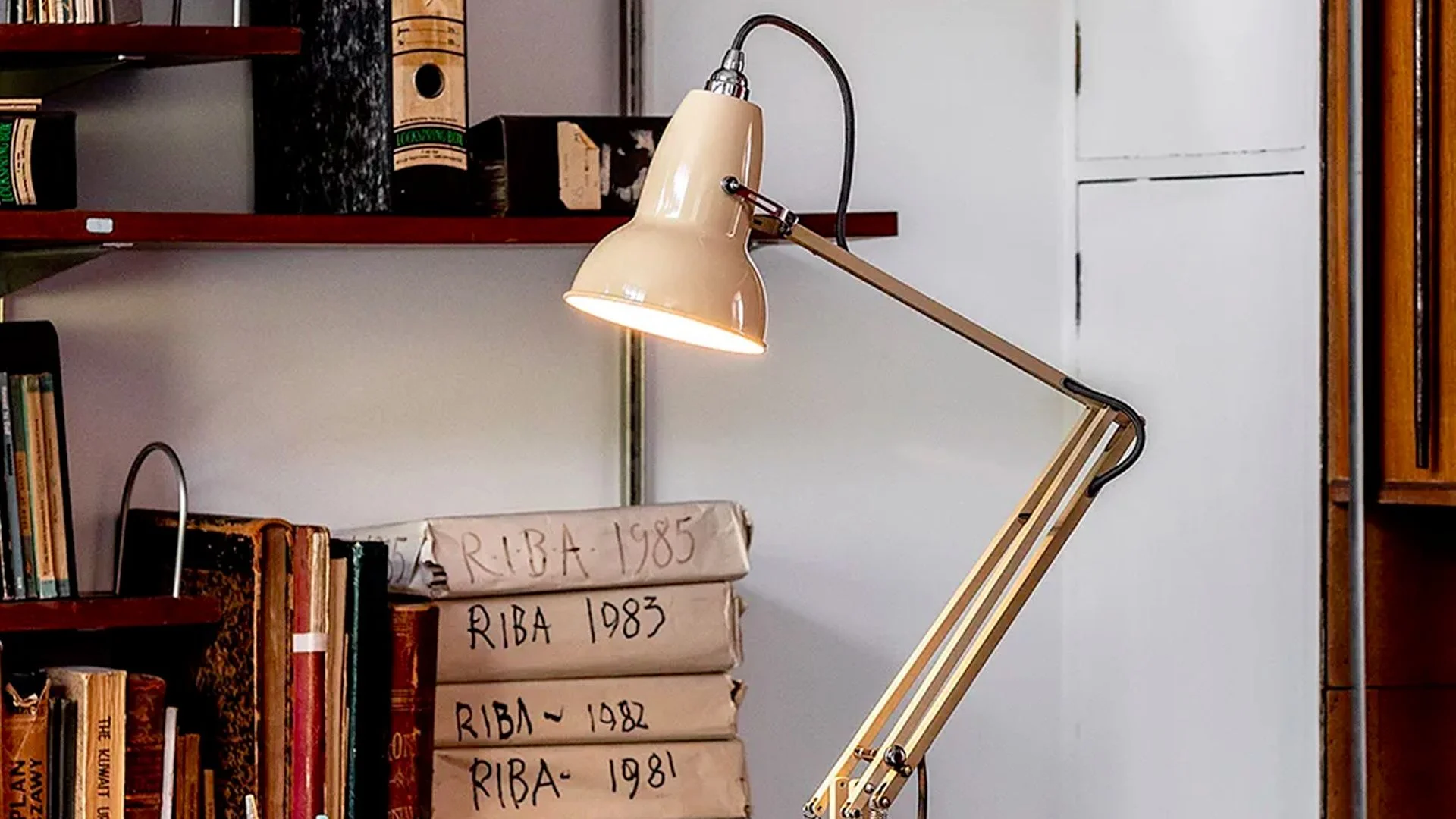
Angelpoise Lamp
The Anglepoise Lamp, a quintessential emblem of British industrial design, was ingeniously crafted by automotive engineer George Carwardine in 1932. Carwardine exploited his knowledge in vehicle suspension systems to devise a groundbreaking, articulated task lamp that could be repositioned with ease while maintaining stability. The design was meticulously developed to accommodate various factors such as manufacturing constraints and material selection, ensuring it met specific engineering requirements before moving to production.
Characterised by its pioneering spring technology and strikingly balanced arm mechanism, the Anglepoise Lamp effortlessly marries functionality with timeless aesthetics. Its adaptable, user-friendly design allows precise control over light direction, seamlessly blending utility and elegance. Consequently, it has illuminated countless workspaces and homes over the decades, cementing its status as an enduring icon in design history.
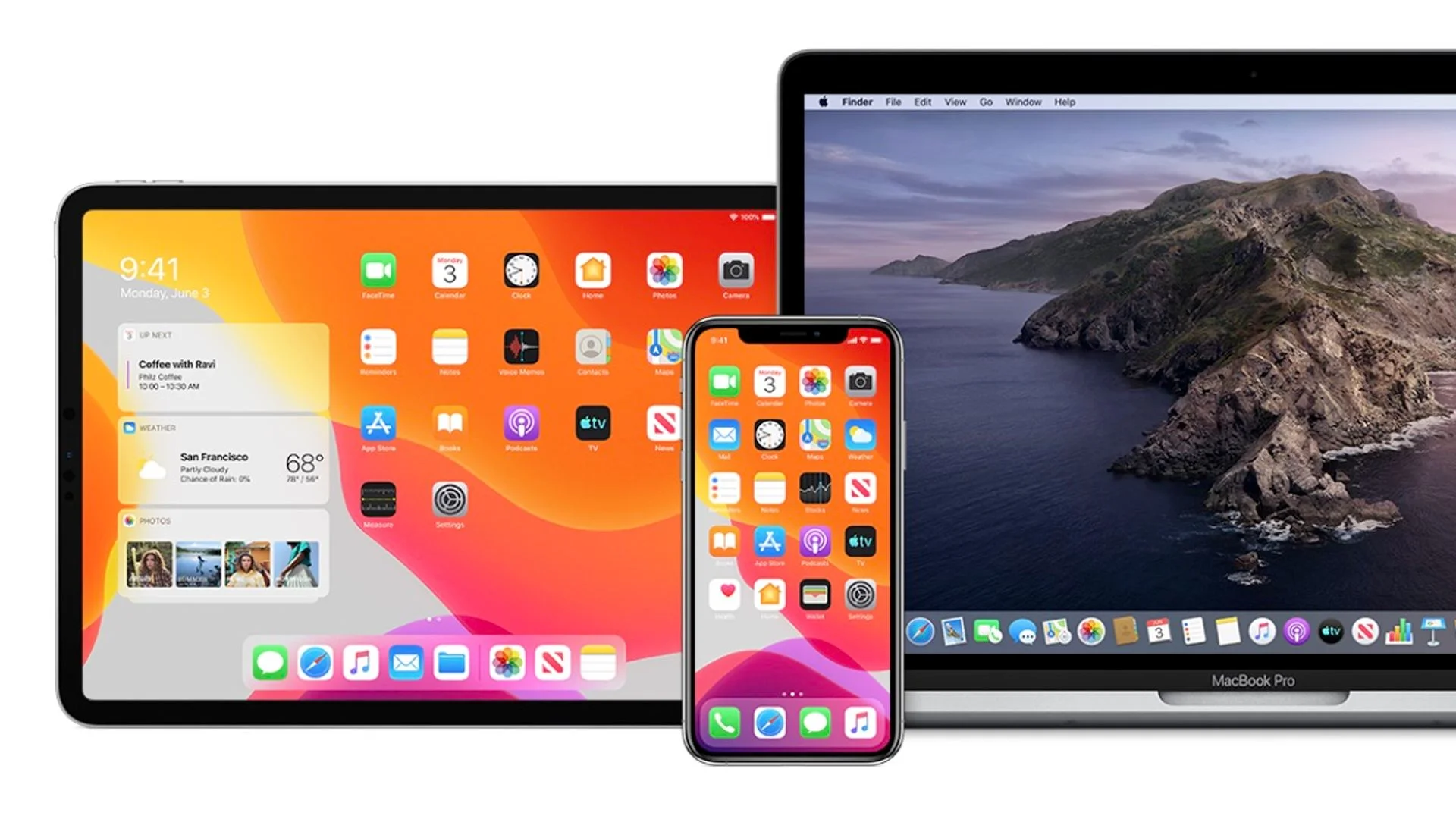
iMac, iPhone, iPod, iPad
The iMac, iPhone, iPod, and iPad, pinnacle creations from Apple Inc., were pivotal in redefining their respective product categories. These products are prime examples of both physical and digital products that enhance usability and marketability. Starting with the iMac in 1998, designed by Sir Jonathan Ive, Apple introduced an all-in-one computer that interconnected technological prowess with minimalist aesthetics.
The iPod (2001) transformed music portability and consumption with its compact design and vast storage. 2007’s iPhone revolutionised communication, combining phone capabilities with internet access, all via its pioneering touchscreen interface. Lastly, the iPad, launched in 2010, seamlessly bridged the gap between smartphones and computers with its user-friendly tablet format. Each product, marrying functionality with sleek, intuitive design, significantly impacted societal interactions with technology, etching their place as iconic industrial designs.
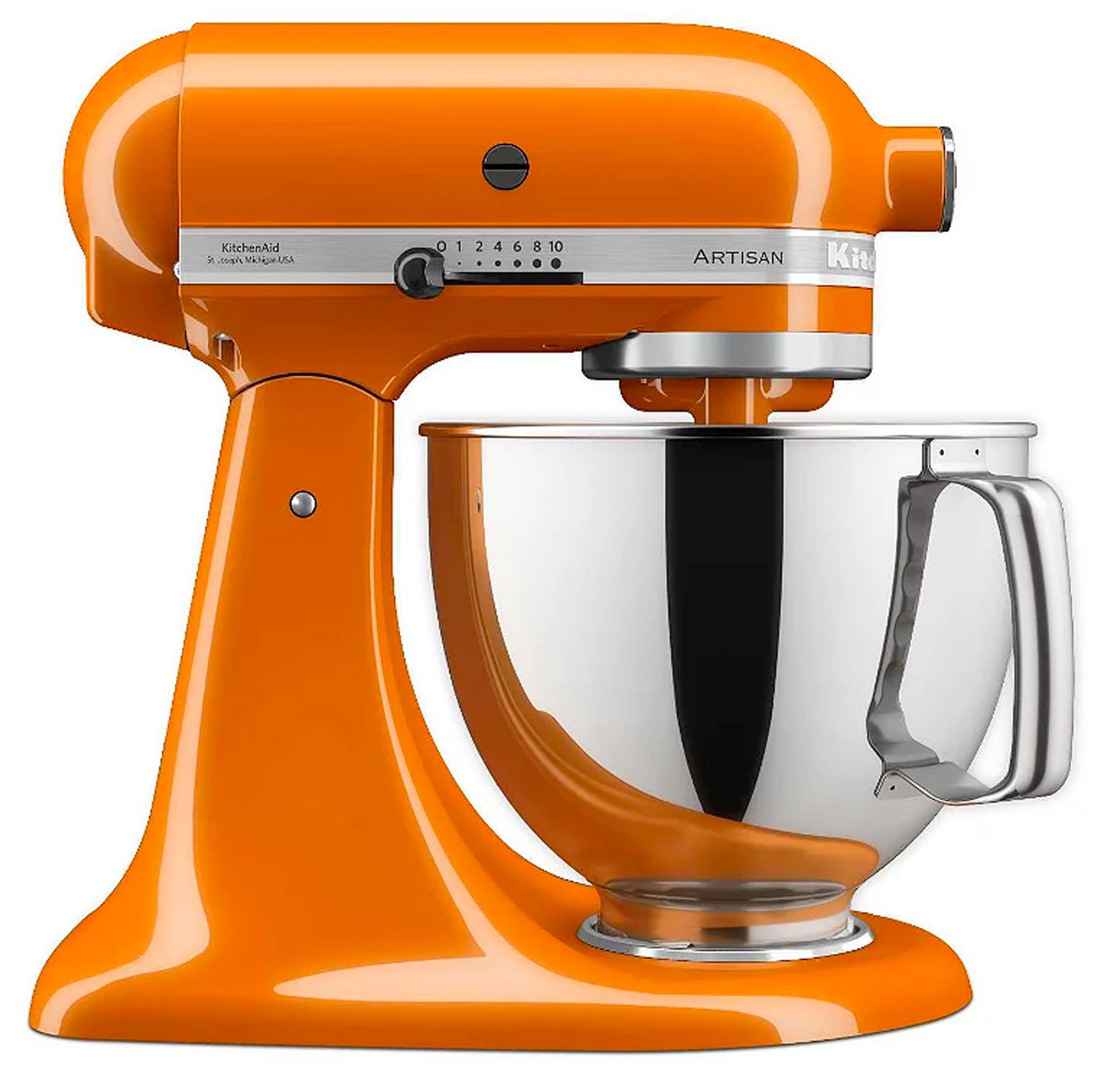
Kitchen Aid Stand Mixer
The KitchenAid Stand Mixer, an emblematic fixture in culinary toolkits, was invented by engineer Herbert Johnston and introduced by the Hobart Corporation in 1919. Initially conceptualised to alleviate the labour-intensive process of bread-making for bakers, it soon morphed into a versatile kitchen companion for cooks globally. The KitchenAid Stand Mixer set a standard that many other brands have emulated.
Revered for its robust functionality and timeless aesthetic, the KitchenAid Mixer epitomises a perfect amalgamation of form and function. Its classic design, characterised by a sturdy, rounded silhouette and signature colour variations, has endured for over a century, demonstrating an unparalleled standard in design longevity. This iconic appliance harmoniously blends durable engineering with an aesthetically pleasing form, enhancing both culinary capabilities and kitchen aesthetics.
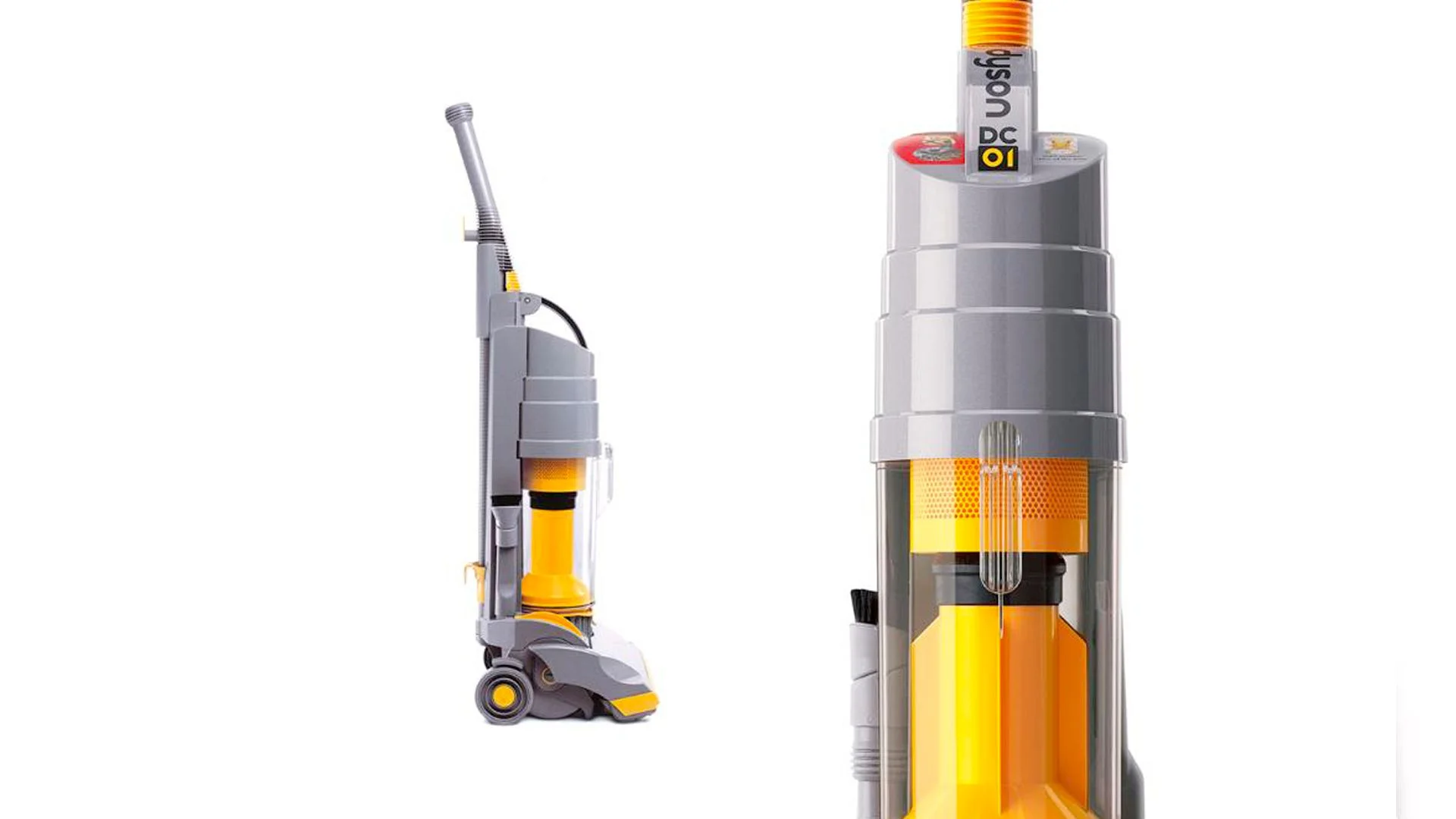
Dyson DC01 Upright Vacuum
The creation of the Dyson DC01, launched in 1993, emerged from the inventive mind of British engineer Sir James Dyson. The DC01 disrupted the vacuum cleaner market by introducing pioneering cyclonic separation technology, eliminating the need for vacuum bags and ensuring sustained suction power. Dyson’s journey, involving 5,127 prototypes, epitomises perseverance and innovative spirit in industrial design.
The vacuum’s clear bin, displaying spiralling dust, became not just a functional element but also a visual testament to its efficiency, intertwining form and function seamlessly. This sleek, futuristic, and user-friendly design altered perceptions of household appliances, paving the way for a lineage of Dyson vacuums that continually blend technological innovation with distinctive aesthetics.

Bic – Ball Point Pen
The BIC Cristal ballpoint pen, an emblematic piece of industrial design, was conceived by László Bíró and brought to the mass market by Marcel Bich and Édouard Buffard in 1950. Unlike fountain pens, which often suffered from drying out and inconsistent ink flow, the BIC ballpoint pen offered a reliable and consistent writing experience. The pen symbolises an astute merger of function, affordability, and consistent performance. Its hexagonal shape mimics a traditional pencil, offering ergonomic comfort and preventing it from rolling off surfaces. The clear barrel not only showcases the ink level but also embodies a straightforward, honest design principle.
The BIC pen, recognised for its reliability and cost-effectiveness, democratised writing instruments and became an icon through its ubiquity and unfaltering quality, meriting its place in New York’s Museum of Modern Art.
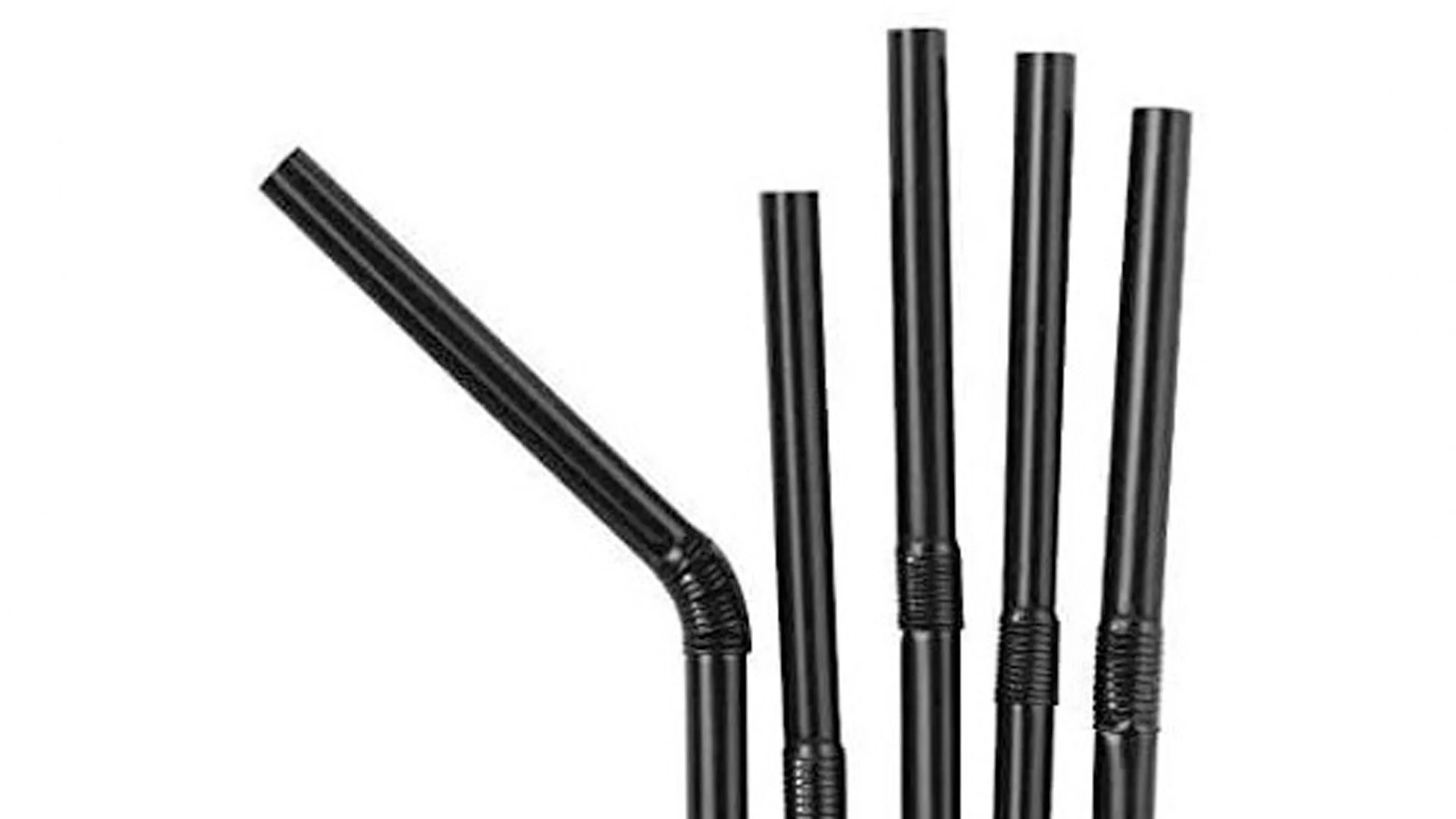
Bendy Straw
The bendy straw, a perfect example of user-centered design, was invented in 1937 by Joseph Friedman. Observing his daughter struggle to comfortably reach a straight straw, Friedman conceived a version that bent without collapsing, enhancing functionality and user experience, particularly for children and people with disabilities.
He inserted a screw into the straw, wrapped dental floss around it, and created ridges that enabled flexibility. This seemingly simple solution profoundly impacted the beverage industry, symbolising the power of empathetic, user-centred design. Today, the bendy straw stands as an icon, representing how straightforward innovations can permeate global markets and become integral to everyday life.
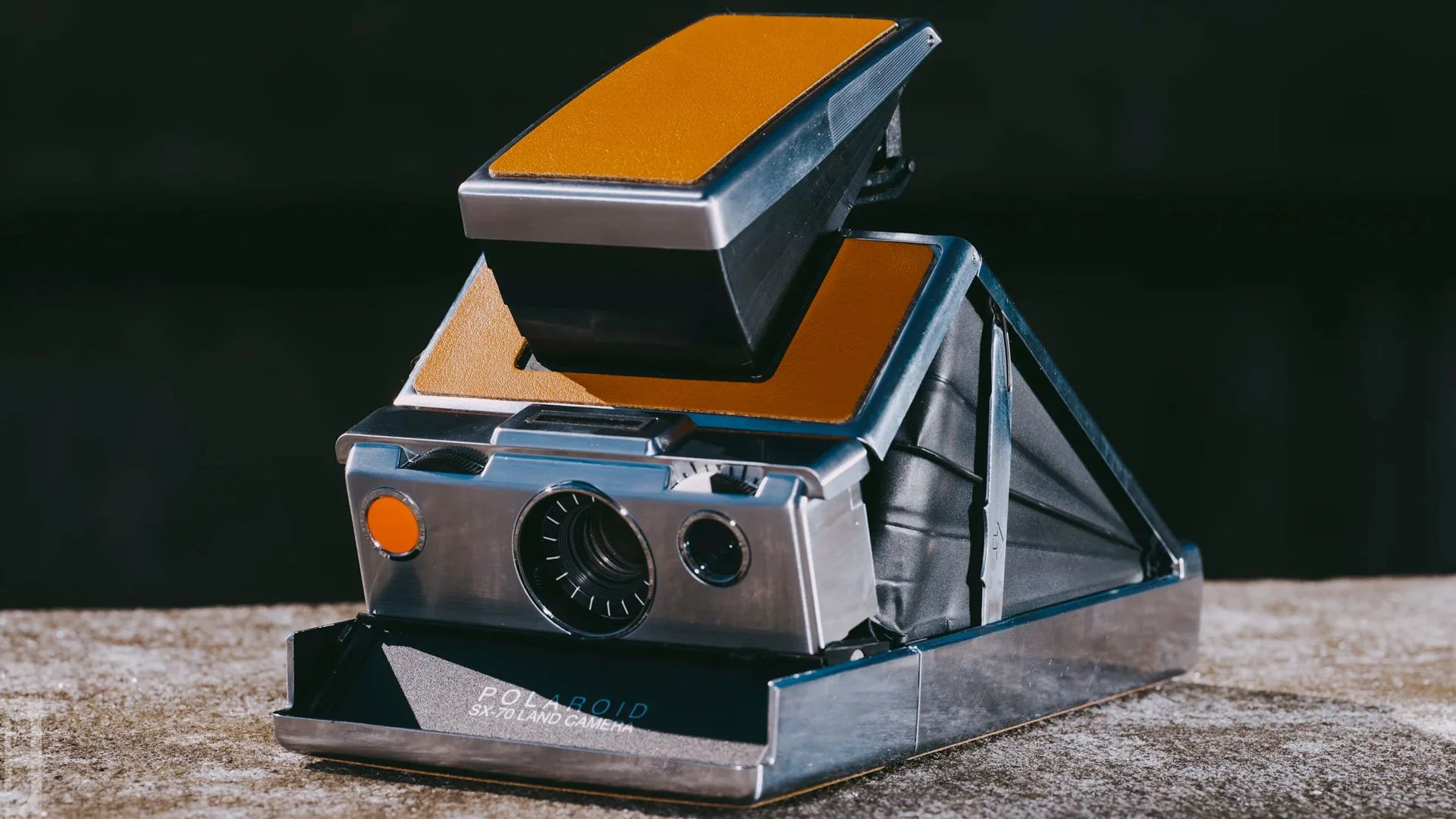
Polaroid SX70 Camera
The Polaroid SX-70, an emblem of technological and design mastery, was invented by Dr. Edwin Land and introduced in 1972. Another nostalgic product that combines joy with collectibility is the PEZ dispenser, known for its unique designs that appeal to collectors. It stands out not only as the first instant SLR (Single Lens Reflex) camera but also as a marvel that transformed the photographic world by elegantly combining intricate engineering with a strikingly sleek aesthetic.
With its folding design, the SX-70 was portable yet offered a sophisticated photographic experience, instantly producing vibrant photos without the need for a darkroom. The camera is celebrated for its innovative spirit, marrying form and function and paving the way for future iterations of instant photography, thereby solidifying its place as an iconic piece of industrial design.

Fitbit
Fitbit, a pioneering force in the wearable technology industry, was conceived by James Park and Eric Friedman and introduced to the market in 2009. It’s celebrated for revolutionising personal health monitoring by offering a compact, aesthetically pleasing device that seamlessly merges technology and health. The Fitbit empowers users to effortlessly track vital health metrics and physical activity, intertwining an intuitive user interface, robust technology, and sleek design.
Its understated elegance and functional prowess embody quintessential industrial design principles, facilitating an unobtrusive yet powerful user experience and setting a new standard for consumer health technology. In a sense, Fitbit has indelibly reshaped the intersection of fitness, health, and technology, earning its status as an iconic industrial design.
Creating a product, like the renowned ones mentioned earlier, is no easy journey. A well-known example is James Dyson’s adventure in design and innovation. He had to craft and evaluate countless prototypes before reaching a design that met his stringent performance criteria, showcasing that each product development journey is filled with its unique set of challenges and hiccups.
At Bluefrog Design, our team goes beyond just designing. We are dedicated to ensuring that your product can be brought to life and manufactured without exceeding development budgets while still keeping its initial innovative spark alive. We don’t just provide a service; we stand beside you as partners, making certain that your vision smoothly transitions from a concept to a viable, market-ready product. Our industrial design studio, has a wealth of experience. We navigate through the many facets of product development, helping you sidestep potential issues and ensuring the journey from idea to production is both innovative and cost-effective. Together, let’s turn your vision into reality and craft products that stand out in the market.
Understanding Industrial Design
Industrial design is a field that combines creativity and practicality to shape the products we interact with daily. It involves considering usability, ergonomics, and aesthetics in product development. Industrial designers aim to create products that are functional, aesthetically pleasing, and user-friendly. The goal of industrial design is to improve people’s lives through innovative product design.
History and Evolution of Industrial Design
Industrial design has a captivating history that spans over a century. The growth of industrial design started peaking during the Industrial Revolution. The Western world began mass-producing products during this time, sparking a demand for better-designed products. Design pioneers like Walter Darwin Teague, Carl Sundberg, and Montgomery Ferar were early champions of industrial design. By the 1950s, larger corporations like General Motors had in-house industrial design teams. Industrial design continues to evolve, adapting to digital technologies and embracing sustainable practices.
Principles of Good Design
Dieter Rams, a renowned industrial designer, outlined principles for good design in his book “Ten Principles for Good Design”. The principles include innovation, usefulness, aesthetics, understandability, unobtrusiveness, honesty, long-lastingness, thoroughness, and environmental friendliness. These principles guide industrial designers in creating products that are both functional and beautiful.
The Intersection of Industrial Design and Graphic Design
Industrial design and graphic design are two distinct fields that often intersect. Graphic designers contribute to the visual identity of a product, while industrial designers focus on the product’s form and function. Collaboration between industrial designers and graphic designers is essential in creating a cohesive and attractive product. The iPhone, for example, is a product that showcases the successful intersection of industrial design and graphic design. The sleek design and intuitive user interface of the iPhone are a result of the collaboration between industrial designers and graphic designers.
Industrial design is a field that requires a deep understanding of user needs and behaviors. It involves balancing form and function to create desirable products. The goal of industrial design is to create products that are both aesthetically pleasing and functional. With the advancement of technology and materials, industrial design continues to evolve, and its intersection with graphic design is becoming increasingly important.
Production and Manufacturing in Industrial Design
In the realm of industrial product design, production and manufacturing processes play a pivotal role in transforming conceptual designs into tangible products. Industrial designers collaborate closely with engineers and production teams to ensure that designs can be efficiently and economically manufactured. This involves selecting appropriate materials, optimizing production techniques, and conducting rigorous usability testing to refine the product’s functionality and user experience.
Modern production processes often leverage advanced technologies such as 3D printing and computer-aided design (CAD) to expedite prototyping and streamline manufacturing. These technologies enable designers to quickly iterate on designs, test various configurations, and make data-driven decisions to enhance the final product. The integration of these technologies not only accelerates the development timeline but also ensures that the product aligns with the intended purpose and meets the quality standards expected by consumers.
Furthermore, industrial designers must consider environmental design principles, striving to minimize waste and reduce the ecological footprint of the products they create. This involves selecting sustainable materials, designing for disassembly and recycling, and optimizing energy efficiency throughout the product’s lifecycle. By incorporating these considerations into the design process, industrial designers contribute to a more sustainable future while delivering innovative and functional products that resonate with consumers.
Ultimately, the success of an industrial design hinges on the seamless convergence of aesthetic appeal, functional performance, and efficient production. By mastering the intricacies of production and manufacturing, industrial designers can bring their visionary concepts to life, creating products that not only captivate users but also stand the test of time in the competitive mass market.
Ready to get started on a project?
Socials



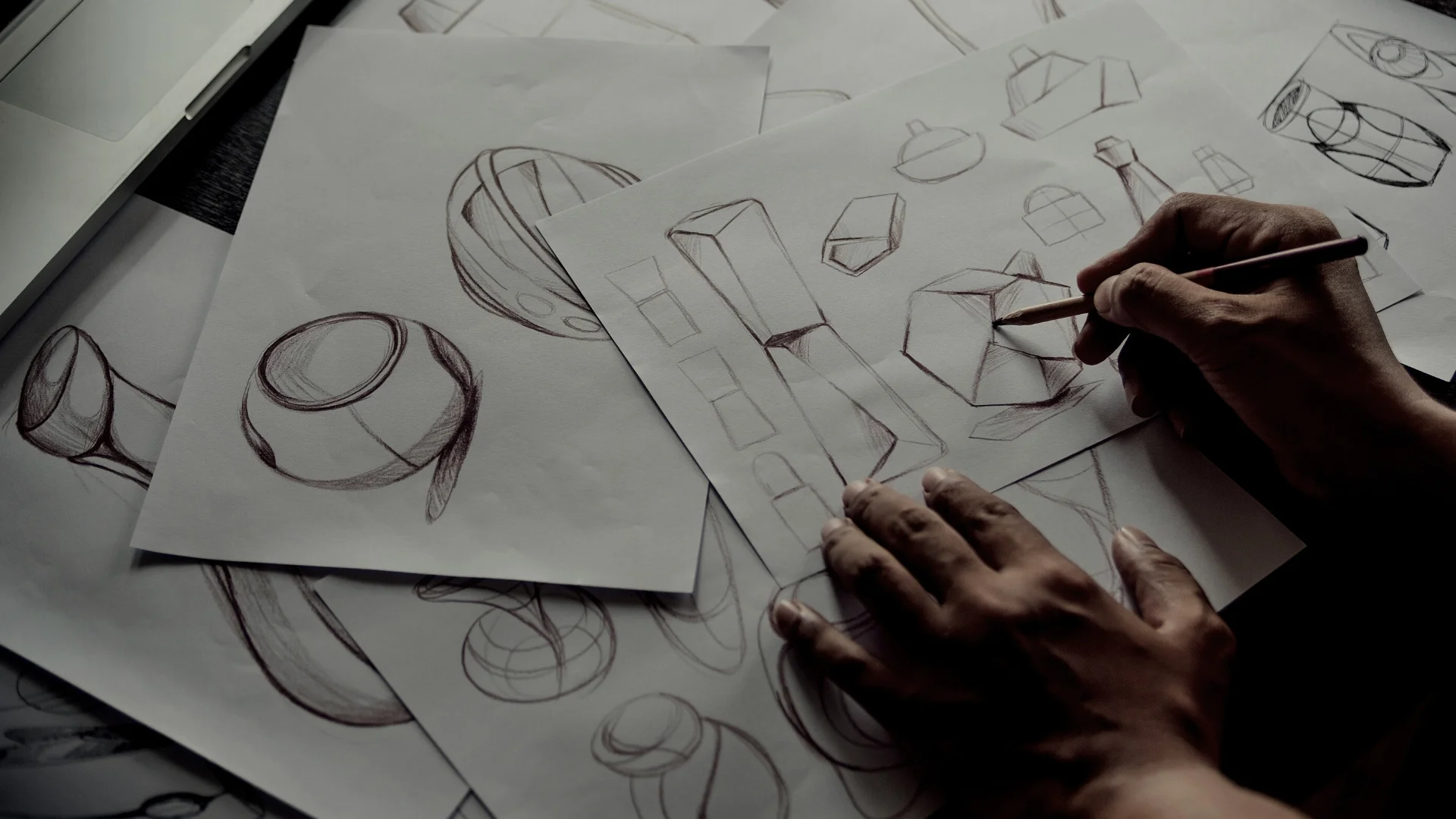

One Comment